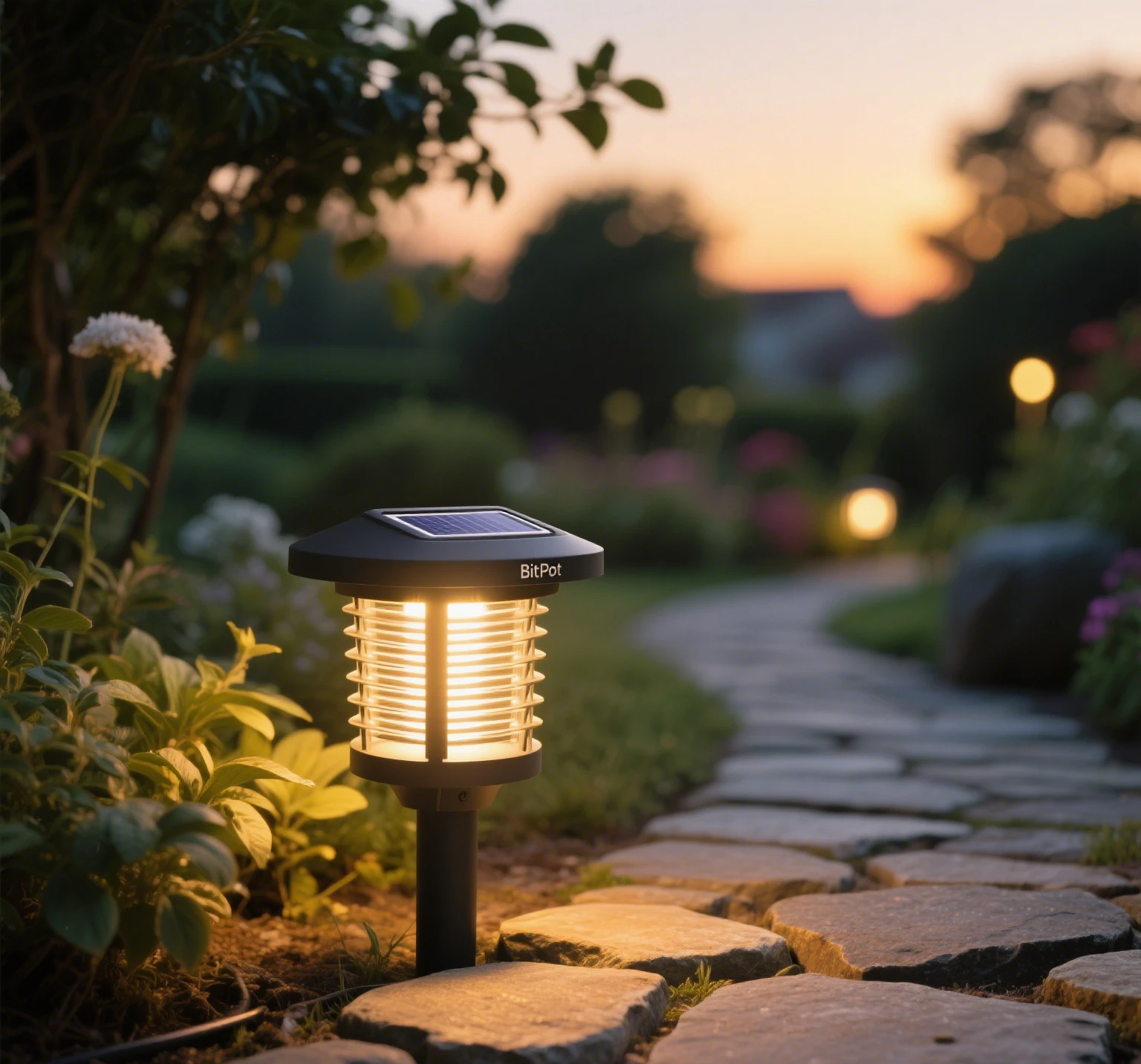Solar lighting, a quintessential application of photovoltaic technology, holds a pivotal role in the new energy sector. It combines advantages such as energy efficiency, environmental friendliness, safety, easy installation, and intelligent control, making it highly valuable for promotion in both energy-scarce urban areas with frequent power cuts and remote regions with limited electricity access. Currently, China’s solar power lighting systems, designed with national conditions and public needs in mind, offer excellent cost-effectiveness. Solar lighting products are diverse, including solar street lights, solar garden lights, solar lawn lights, solar landscape lights, and solar signal lights.

1. Overview of Solar Street Lights
Solar street lights, sometimes referred to as integrated solar street lights, differ significantly from traditional street lights as they require no pre-laid cables. Their operation hinges on the efficient use of solar energy: during the day, they actively absorb sunlight, converting it into electrical energy for storage. At night, when visibility decreases, they automatically control illumination to meet road lighting needs, enhancing nighttime travel safety. Compared to conventional street lights, solar street lights boast longer lifespans, significantly reduced maintenance, and minimal upkeep.
In their structure, the solar panel is the most critical component. By day, solar panels act as diligent energy collectors, absorbing sunlight and converting this clean energy into electricity stored in energy storage devices. When night falls, the stored electricity, under the control of a photoelectric switch, is converted into light energy, powering LED lights to illuminate roads.
2. Connection Between Solar Photovoltaic Modules and Solar Street Lights
(1) Core Connection in Working Principle
Solar photovoltaic modules, commonly known as solar panels, are the heart of solar street lights’ photoelectric conversion. Typically made from materials like polycrystalline silicon, these panels generate electricity when sunlight strikes them. Photons interact with atoms in the semiconductor material, exciting electron-hole pairs. Under the internal electric field of the module, electrons and holes move in opposite directions, creating a current and directly converting solar energy into electricity. This process, reliant on the photovoltaic effect, enables solar street lights to operate independently of traditional power grids.
(2) Critical Role in System Composition
From a system perspective, solar photovoltaic modules are the indispensable starting point of a solar street light system. A complete system comprises solar panels (photovoltaic modules), batteries, charge-discharge controllers, light sources (e.g., LED lights), poles, and related accessories.
- Energy Input: Photovoltaic modules collect and convert solar energy into electricity, providing the system’s initial energy input.
- Energy Storage: Batteries store excess electricity generated by the panels during the day for use at night or during low-light conditions.
- Intelligent Management: Charge-discharge controllers act as the system’s “smart manager,” precisely regulating battery charging and discharging to extend battery life and prevent overcharging or over-discharging.
- Illumination: Light sources convert electricity into light to provide illumination, while poles and accessories support and secure the components.
In this system, photovoltaic modules are at the forefront of energy acquisition. Their performance directly impacts the system’s operational stability and lighting effectiveness. For instance, high-efficiency modules generate more electricity under the same light conditions, meeting lighting needs while storing additional energy in batteries, extending illumination duration during consecutive rainy days.

3. Collaborative Trends in Industry Development
In terms of industry trends, many street light manufacturers are no longer content with merely purchasing solar panels for production. Increasingly, they are venturing into panel manufacturing, driven by strategic considerations.
- Quality Assurance: Producing panels in-house ensures quality control. By overseeing the entire production process, manufacturers can select premium raw materials and optimize techniques, enhancing photoelectric conversion efficiency and durability. High-quality panels provide stable, long-lasting energy for solar street lights, boosting product quality and market competitiveness.
- Industry Chain Expansion: Manufacturing panels allows companies to extend their industry chain, transitioning from simple assembly to full-chain production and sales. This shift enhances resilience against market risks, reduces reliance on external suppliers, and enables better resource integration for cost control and profit maximization. For example, some large street light companies establish photovoltaic module production bases to meet their own needs while selling surplus panels, creating new revenue streams.
4. Technical Research Driving the Connection
Research on solar lighting provides robust support for the synergy between photovoltaic modules and solar street lights. Studies show that optimizing the materials and structures of photovoltaic modules significantly improves adaptability to varying light conditions and conversion efficiency. For instance, new thin-film photovoltaic modules, while lightweight, achieve higher conversion rates, which is crucial for solar street lights in space-constrained or complex installation environments. Additionally, research focuses on improving system designs to better match module output characteristics. Through intelligent control systems, light source brightness and operating times can be dynamically adjusted based on real-time module generation and battery status, enhancing energy efficiency.
5. Close Collaboration in Practical Applications
In practical applications, the tight integration of photovoltaic modules and solar street lights demonstrates significant advantages across various scenarios.
- Urban Road Lighting: In urban settings, solar street lights, powered by photovoltaic modules, reduce reliance on traditional grid electricity, lowering carbon emissions and easing urban power demands. Their cable-free design avoids traffic disruptions and environmental damage from road excavations.
- Rural and Remote Areas: In rural and remote regions, solar street lights address power access challenges, providing convenient nighttime lighting. For example, in mountainous villages where grid installation is costly and complex, solar street lights, powered by photovoltaic modules under ample sunlight, ensure road illumination, improving residents’ quality of life.
In conclusion, solar photovoltaic modules and solar street lights are intricately linked across principles, system composition, industry development, and practical applications. As the core energy component, photovoltaic modules determine the performance and stability of solar street lights while shaping the industry’s development trajectory. With ongoing technological advancements and industry upgrades, the synergy between these components will grow stronger, playing a vital role in advancing green, sustainable lighting solutions.

Comments